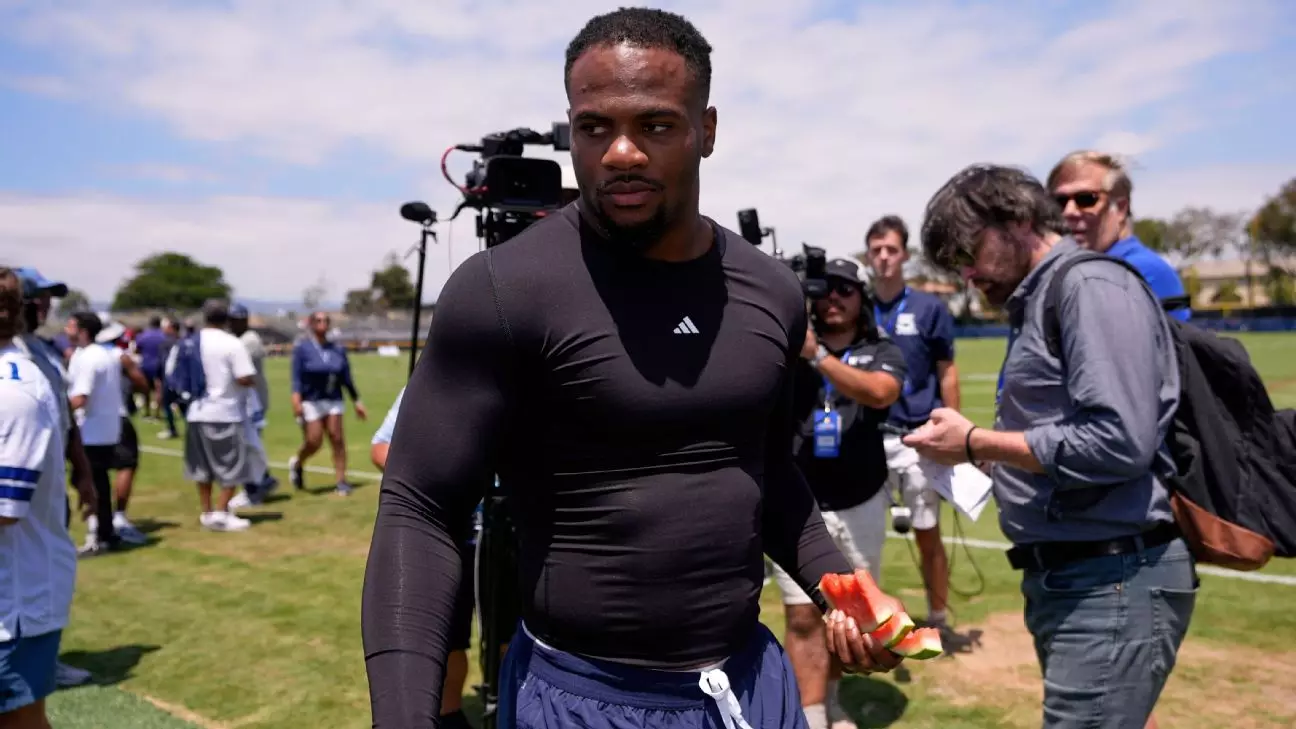In the high-stakes world of professional football, leadership is often tested not just on the field, but in boardrooms and negotiations behind the scenes. The controversy surrounding Dallas Cowboys star Micah Parsons highlights a fundamental truth: effective leadership requires clarity, assertiveness, and sometimes, taking calculated risks. Cowboys owner Jerry Jones’s unwavering stance emphasizes how confidence from the top can shape an athlete’s future and influence team dynamics. Jones’s public declarations about his willingness to offer record-breaking guarantees demonstrate a belief in his ability to secure top talent, yet they also reveal a clash of philosophies between management and the player’s representation.
Jones’s assertion that he was prepared to make Parsons the highest-paid non-quarterback in NFL history underscores a philosophy rooted in boldness. By openly stating that he’s offered more guaranteed money than anyone else has for a defensive player, Jones signals that he values talent and loyalty highly. This bravado isn’t just about money; it reflects a core conviction that leadership, whether in sports or business, depends on showing unwavering resolve. Still, his confrontational tone regarding the agent’s refusal to finalize the deal suggests a mismatch between confidence and diplomacy. Leaders who rely solely on their authority risk alienating critical partners, and in this case, Jones’s blunt remarks about the agent could backfire if not carefully managed.
Parsons’s public trade request signaled a deeper tension—one that transcended contract figures and touched on trust, respect, and leadership. When athletes push back against management, it’s often a symptom of feeling undervalued or disrespected. Jones’s strategy of publicly emphasizing his commitment while shifting the negotiation blame onto Parsons’s agent illustrates a desire to project control, yet it also exposes a potential vulnerability: an overreliance on contractual leverage rather than fostering true partnership. Successful leadership in this context isn’t just about throwing money at a problem; it’s about cultivating mutual respect and understanding.
Strategic Decision-Making in Contract Negotiations
From a strategic perspective, Jones’s willingness to let Parsons play the season on the fifth-year option indicates a calculated move. It reflects a broader philosophy: sometimes, patience and flexibility are more powerful than immediate confrontation. By choosing to defer the negotiations and relying on franchise tags if necessary, Jones demonstrates a pragmatic approach—one that balances financial prudence with competitive readiness. This decision, however, must be weighed against the risk that a player with Parsons’ stature might feel alienated or undervalued if the negotiation drags out too long.
Furthermore, Jones’s comparisons to Dak Prescott’s contract process reveal a leadership style rooted in precedent. By referencing his historical experience, he seeks to normalize the negotiation timeline, implying that patience and persistence can ultimately lead to favorable outcomes. That approach underscores an essential principle in leadership: resilience and consistency often triumph over reactive strategies. However, it’s equally vital to recognize that this method assumes a shared understanding of value. If Parsons, or his agent, perceives the negotiations as undervaluing his importance, that patience may be perceived as indifference, warranting careful management of communication and expectations.
The Role of Boldness and Confidence in Achieving Goals
What’s most compelling is Jones’s unabashed confidence in his philosophy—believing that his offers and strategies are sufficient, even if they are currently unaccepted. The willingness to openly declare a record-breaking guaranteed amount sends a message: a leader who believes fiercely in his vision can sometimes sway perceptions and negotiations through sheer conviction. That belief can inspire loyalty if communicated authentically, but it can also breed conflict if perceived as arrogance or disregard for the athlete’s perspective.
Ultimately, Jones’s approach underscores a vital insight: successful leadership in sports—and in broader contexts—often hinges on a balance between assertiveness and empathy. While his aggressive stance demonstrates a commitment to securing top talent, it also risks overlooking the personal motivations and concerns of the athlete. True power lies not just in possessing resources or making aggressive offers, but in understanding and aligning with the values of those you lead. Jones’s boldness can serve as a reminder that confidence, when paired with strategic patience and authentic respect, creates a more sustainable path to victory—both on the field and beyond.

